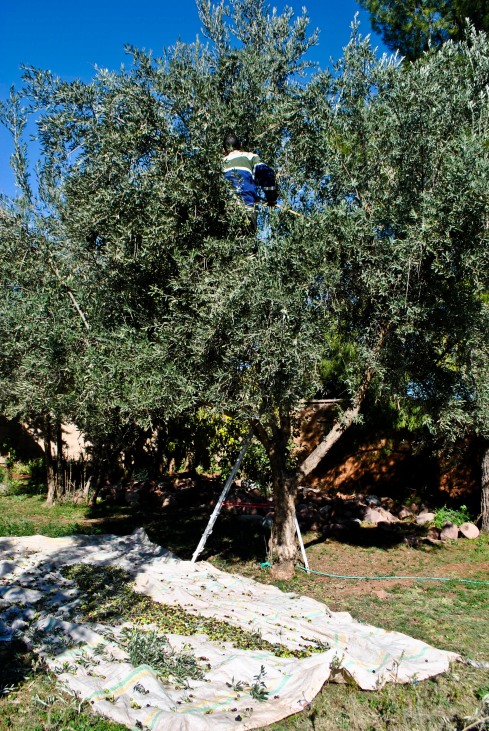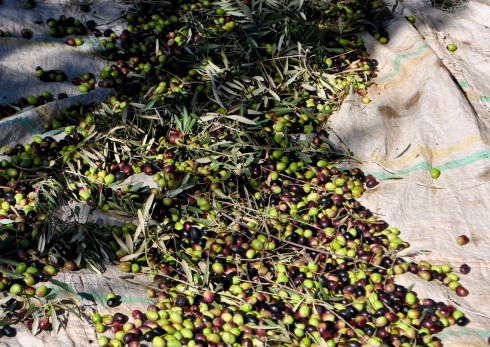Marakkech / Morocco Board News– Olive season has just come to and end…and by olive season I mean that the olives ripened, were harvested, and either pressed for oil or cured to turn them edible. Did you know that both black olives and green olives come from the same tree? Here is a very ripe olive from our family farm.
Did you also know that harvesting olives by hand is a labor intensive business? In Morocco it’s all done this way: a large plastic is laid out under the tree, then you take a long bamboo stick and start to beat at the olives to knock them down. Eventually you have to climb the tree to get to the higher branches. Olives yield about 16 liters of olive oil per 100 kgs of olives, depending on how much the trees were watered. The more they were watered, the juicier the olives.
I will never forget when I was 8 years old and I spent a whole day knocking all the olives off a particular tree. At the end of the day, I had very sore hand and about 20 kgs of olives. I was very excited to lug my harvest down the road to where they would buy them from you for about a dirham per kilo (like 6 cents per pound, for those of you who are allergic to the metric system). I walked back with more than 20 dirhams in my pocket (2.5 dollars). I’d never been prouder of my earnings (maybe even to this day ![]() . It didn’t occur to me that those olives actually belonged to my parents, and that technically, I owed them like 90% of the money. They kindly didn’t point it out either.
. It didn’t occur to me that those olives actually belonged to my parents, and that technically, I owed them like 90% of the money. They kindly didn’t point it out either.
Everywhere in the Moroccan countryside, you see olive trees, and under them there is wheat or barley growing. Each farming family gets olive oil and flour for the entire year. This way they have fresh bread and olive oil, which, along with sweet green tea, is a meal unto itself. Talk about local, sustainable, organic and vegan….This is how it all once was.
Source: MOROCCO: THE SEASON FOR OLIVE










